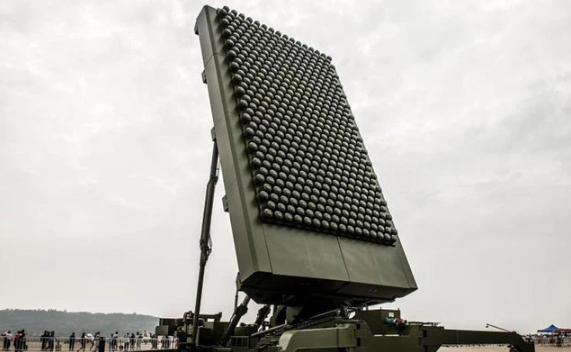Technical Analysis: Deep Dive into the Development History, Current Status, and Future Outlook of China's Radar Technology
Release time:
2025-06-27

Throughout history, the development of radar technology has been like a shining beacon. The grand military parade held in China on September 3rd to commemorate the 80th anniversary of the victory of the Anti-Japanese War carries special significance. This is not only a heartfelt look back at the magnificent history of the war of resistance, but also a powerful declaration to the world of China's national defense strength and its determination to safeguard national sovereignty. With the ever-changing international situation and the continuous escalation of local conflicts, China's near-sea areas face frequent intrusions from external forces. As a cornerstone of national security, the development of radar technology profoundly impacts China's strategic layout and the protection of its maritime borders.
The Rise and Progress of Chinese Radar
In the early days of the People's Republic of China, the country's industrial base was weak, and radar technology was almost nonexistent. Technological blockades and threats from external forces made the establishment of an independent radar system an urgent matter. Against this difficult backdrop, the first generation of radar engineers, with their fervent patriotic hearts, embarked on a path of exploration from scratch.

Image source: Internet. Please contact the editor for removal if there is any infringement.
In 1956, China independently designed and developed its first 406-meter wave long-range warning radar, marking the transition of Chinese radar from assembly and imitation to independent design. In 1976, the 7010 strategic early warning phased array radar was erected on Huangyang Mountain in the Yanshan Mountains, marking China's mastery of advanced phased array radar technology. In 1989, a breakthrough was achieved in airborne pulse Doppler radar, enabling Chinese fighter jets to enhance their capabilities.
After decades of unremitting efforts, China's radar technology has now caught up with the world's advanced level and is in a leading position in some areas.
Current Achievements and Applications of Chinese Radar
After years of technological accumulation and innovative development, China's radar technology has caught up with the world's advanced level and is in a leading position in many areas.
In the field of active phased array radar, China has achieved remarkable results. Many currently active advanced fighter jets are fully equipped with independently developed high-performance airborne active phased array radar systems. The gallium nitride radar systems on some export fighter jets are particularly outstanding.
The application of gallium nitride semiconductor components has enabled a quantum leap in radar signal gain, significantly expanding detection range and improving target identification accuracy. For example, the KLJ-7A airborne active phased array fire control radar has demonstrated strong competitiveness in the international market, indicating that China has the strength to compete with major powers in the high-end field of airborne radar.
China has also made significant breakthroughs in anti-stealth radar technology. The YLC-2E radar uses S-band technology, combining high-density, high-power T/R components with intelligent algorithms to overcome the limitations of traditional anti-stealth radar frequency bands, significantly improving detection accuracy and anti-jamming capabilities. It has target detection, tracking, and anti-stealth functions.

On-site images of Wuhan Rekeda's near-shore security series products
Radar technology is widely and deeply used in various fields in China.
Long-range early warning radars have built a strategic early warning network covering a range of 8,000 kilometers. Academician Ben De of the Chinese Academy of Engineering revealed in a 2025 CCTV interview that the 8,000-kilometer detection capability is not a legacy of the 7010 radar of the last century, but a groundbreaking breakthrough of the fourth-generation over-the-horizon radar system. This ultra-long detection radius, equivalent to the distance from Beijing to Australia, indicates that China's strategic early warning system has established a "sky curtain" defense network covering the entire Pacific and Indian Oceans.
Radar technology also plays an irreplaceable role in civilian applications. Phased array weather radar can accurately predict extreme weather such as typhoons up to 72 hours in advance, providing reliable meteorological support for marine fisheries, maritime transportation, and other industries, and helping to reduce losses from natural disasters.

On-site images of some products from Wuhan Rekeda's near-shore security series
Wuhan Rekeda Technology Co., Ltd. Independently developed XW/SR237 series near-shore security radar It uses filtering anti-interference technology and same-frequency asynchronous signal filtering technology, so that interference from nearby radars on the same channel will not affect the normal operation of the radar.
Ranges of 1.5km/3km/5km/8km etc. can be selected according to needs. It has high detection accuracy, high data refresh rate for fast-moving targets such as large aircraft and speedboats, and can continuously and stably track targets. It is suitable for security of infrastructure such as substations, detention centers, and oil pipelines, as well as airport perimeters and railway lines.
In addition, China is actively building a near-shore radar network collaborative detection system, linking scattered coastal radar stations through high-speed data links to form an intelligent "decentralized" monitoring network. Through distributed detection by multiple radar stations, it compensates for the blind spots of single radars, significantly improving target detection accuracy and early warning accuracy. This system also enhances the survivability of individual radar stations, ensuring the stability and reliability of near-shore security detection in complex environments, and achieving all-weather, all-time, and full-coverage precise detection of near-shore waters.
The Future and Strategic Significance of Chinese Radar
In the future, Chinese radar technology will develop rapidly in the direction of intelligence, multi-band and multi-system integration, and breakthroughs in cutting-edge technologies. In terms of intelligence, radar will deeply integrate artificial intelligence technology. By building intelligent target recognition models and using deep learning algorithms to analyze and process radar echo data in real time, it will achieve rapid and accurate identification and classification of targets, automatically distinguishing different types of ships and airships, and predicting their behavior to detect potential threats in advance.
At the same time, artificial intelligence will automatically optimize radar anti-jamming strategies and adjust operating parameters according to the real-time electromagnetic environment, significantly improving the monitoring performance and reliability of radar in complex environments.
In terms of breakthroughs in cutting-edge technologies, China continues to increase R&D investment in quantum radar and terahertz radar, and is expected to achieve major breakthroughs. The quantum entangled radar prototype developed by the Nanjing Institute of Electronics Technology has achieved quantum state identification of stealth targets 200 kilometers away. Once the technology matures and is applied, it will fundamentally change the rules of future naval warfare.
On the international stage, powerful radar technology, as an important manifestation of China's national defense strength, also provides stronger technical support for near-shore security, jointly opening a new chapter in the development of radar technology.









